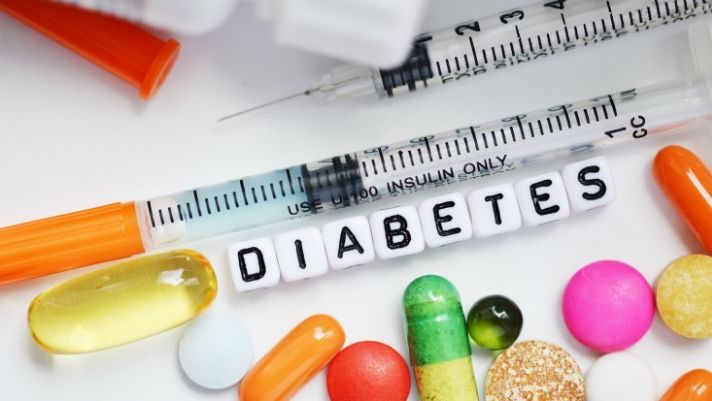Diabetes is a chronic condition where the body cannot properly control the amount of sugar (glucose) in the bloodstream. Glucose converts to energy in the body’s cells, but if the cells don’t use it, the hormone insulin is supposed to remove the excess from the blood. The pancreas produces insulin. In Type 1 diabetes, the pancreas produces no insulin at all; in type 2 diabetes, it doesn’t produce enough, or, cells have developed what’s known as “insulin resistance” and don’t react to the insulin well enough to reduce blood sugar levels. People diagnosed with Type 1 diabetes, which usually occurs prior to age 40, often in the teens, must take insulin for their rest of their lives. Type 2 diabetes typically occurs after age 45, and proper diet and exercise may help control it.
Pre-diabetes is when your blood sugar is too high, but not high enough to qualify as diabetes. Gestational diabetes happens during pregnancy, but may go away after delivery. If your doctor has told you that you have pre-diabetes, you are at higher risk for developing the full-blown disease. Other risk factors include obesity, lack of exercise (sedentary lifestyle), family history, high blood pressure, race, polycystic ovary syndrome and age.
One of the biggest dangers of Type 2 diabetes is not knowing you have it. Symptoms come on gradually and you may not notice them. Some symptoms are:
- Increased or extreme thirst
- Frequent urination
- Unexplained weight loss
- Extreme hunger
- Blurred vision
- Irritability
- Slow healing cuts and sores
- Frequent gum or vaginal infections
- Darkened skin, typically in the armpits or neck
Left undiscovered and untreated, diabetes can cause serious, even fatal, complications. These include:
- Numbness, tingling, or burning pain in the extremities, starting in the fingers and toes and moving upward (neuropathy). This indicates nerve damage.
- Heart disease, atherosclerosis and high blood pressure
- Eye problems including cataracts, glaucoma and damage to the eye’s blood vessels that can lead to blindness
- Kidney failure
- Infections in slow healing cuts or bruises that require amputations
- Increased risk of Alzheimer’s disease
- Gastroparesis (stomach problems where the stomach won’t empty)
- Coma and death
The best defense against developing diabetes is to
- Eat healthy foods, low in sugar and fat, and high in fiber, like vegetables, fruits and whole grains
- Exercise at least 30 minutes per day (moderate) or 15 to 30 minutes of intense activity most days.
- Lose weight: losing as little as 5 to 10 percent of your body weight can decrease the risk of developing diabetes
- Don’t sit for prolonger periods of time – set a timer to remind you to get up and move around every half hour or so.
If you’re concerned about your risk and the dangers of Type 2 diabetes, see your doctor for a test to determine your blood sugar level. If you have high blood sugar, consider booking your first endocrinologist appointment. The both of you can devise a strategy for managing your blood glucose and decreasing your risk of developing diabetes.




